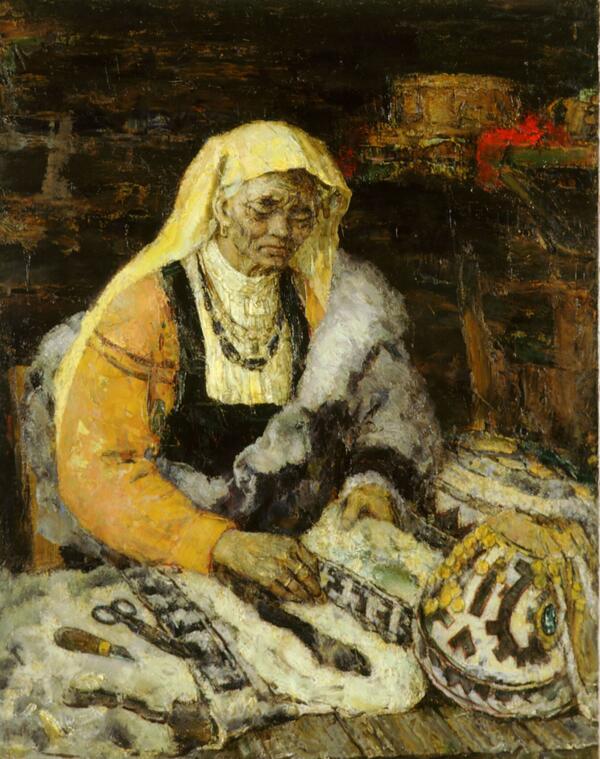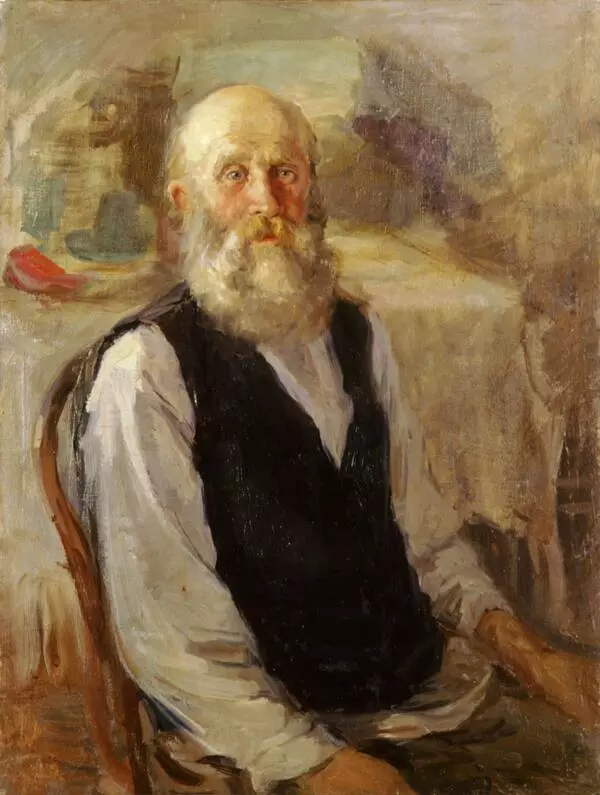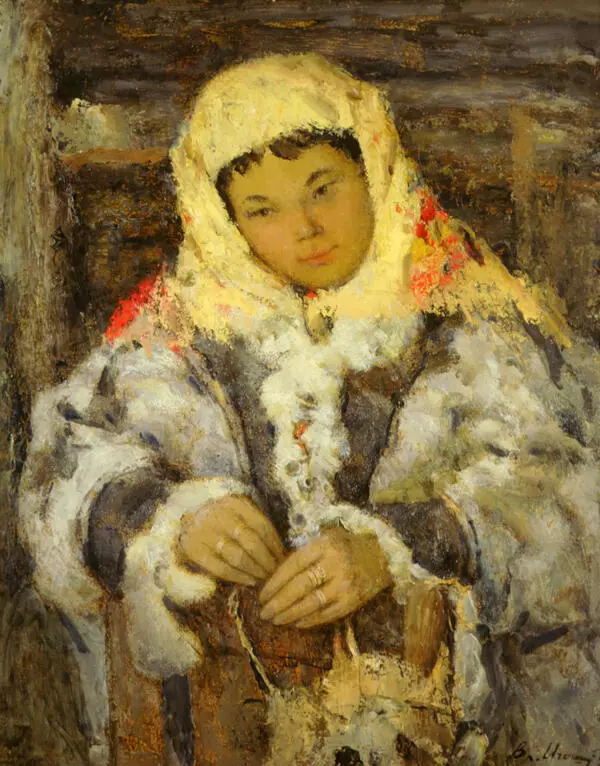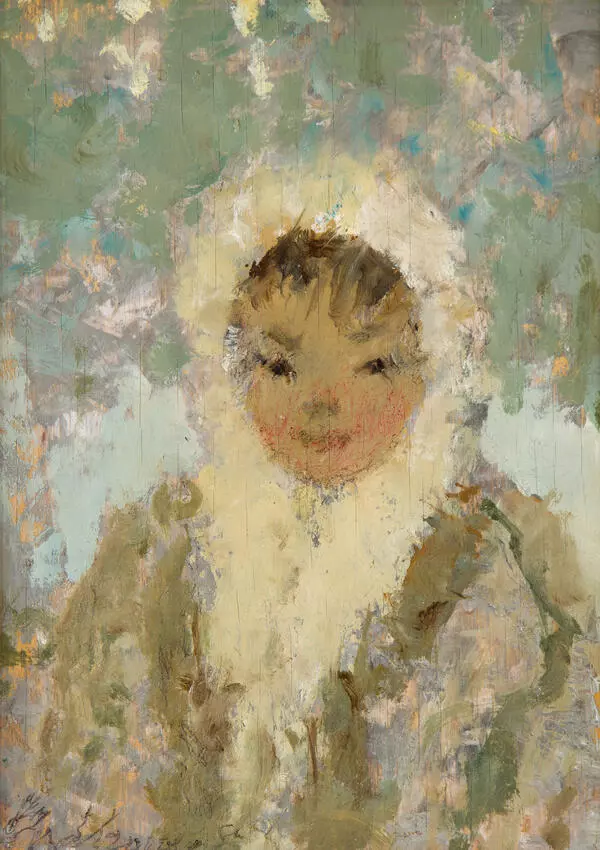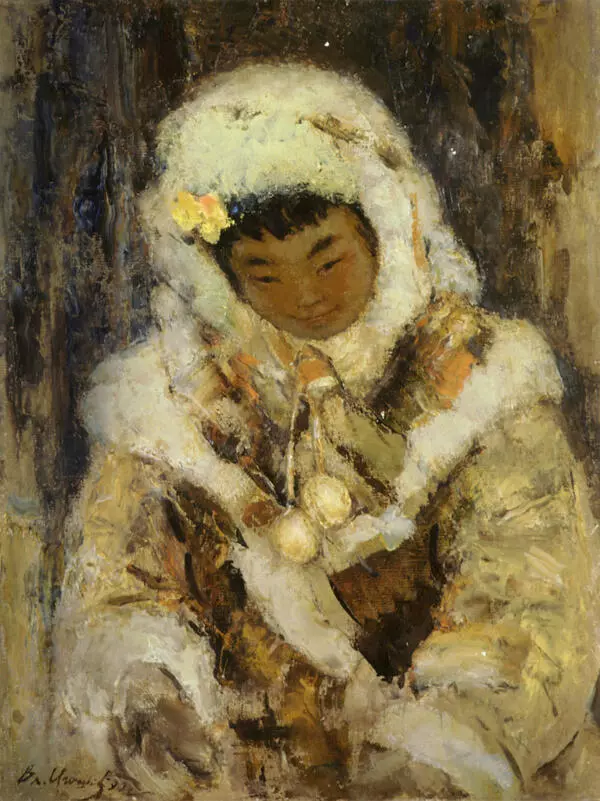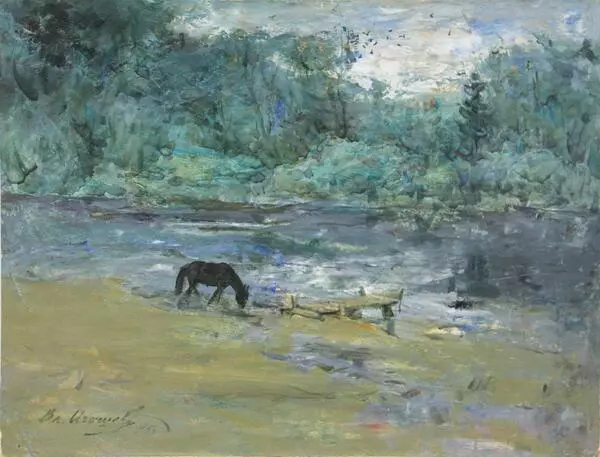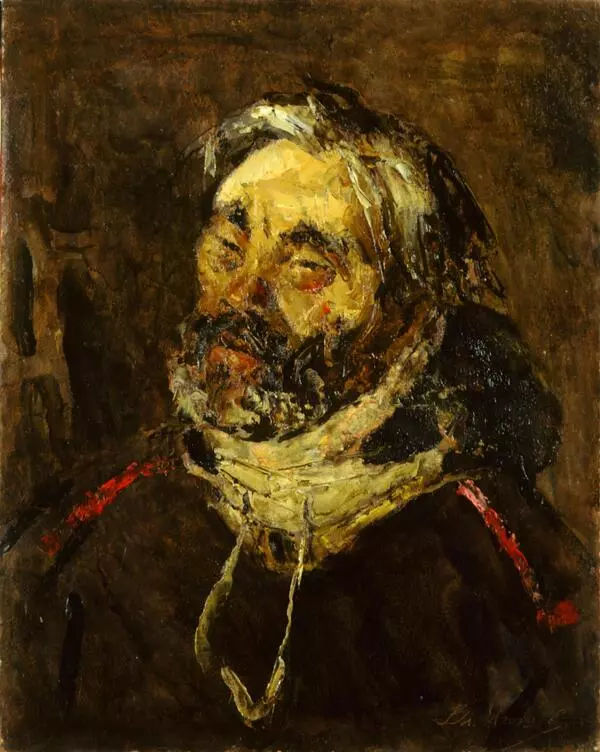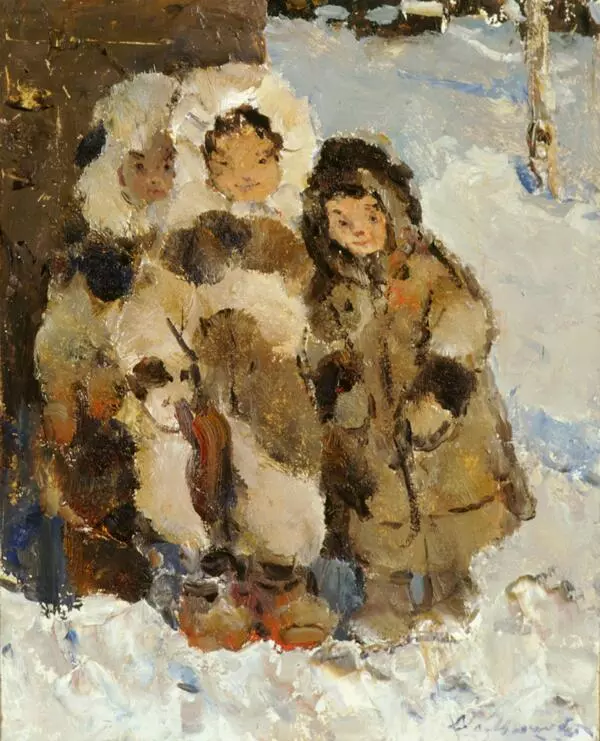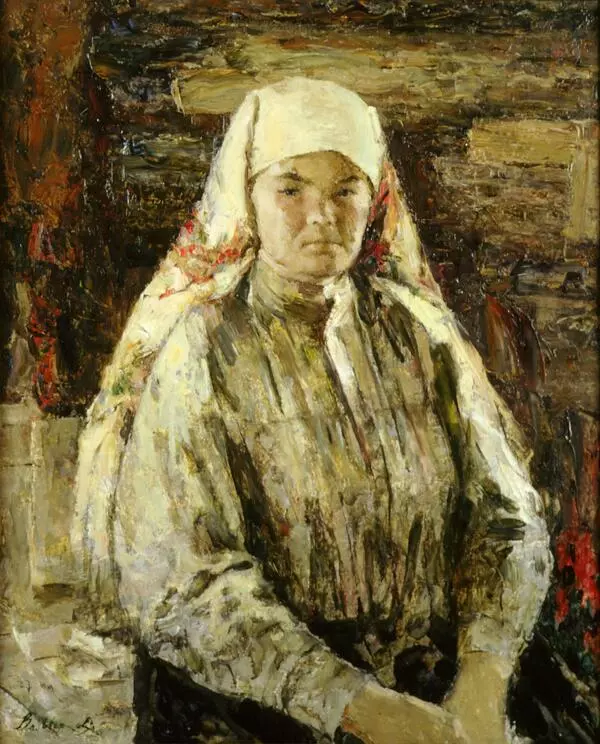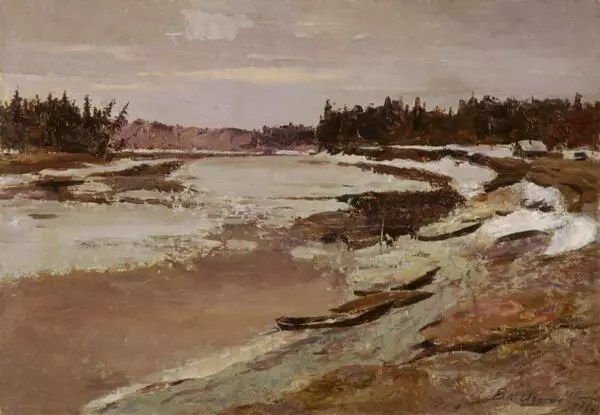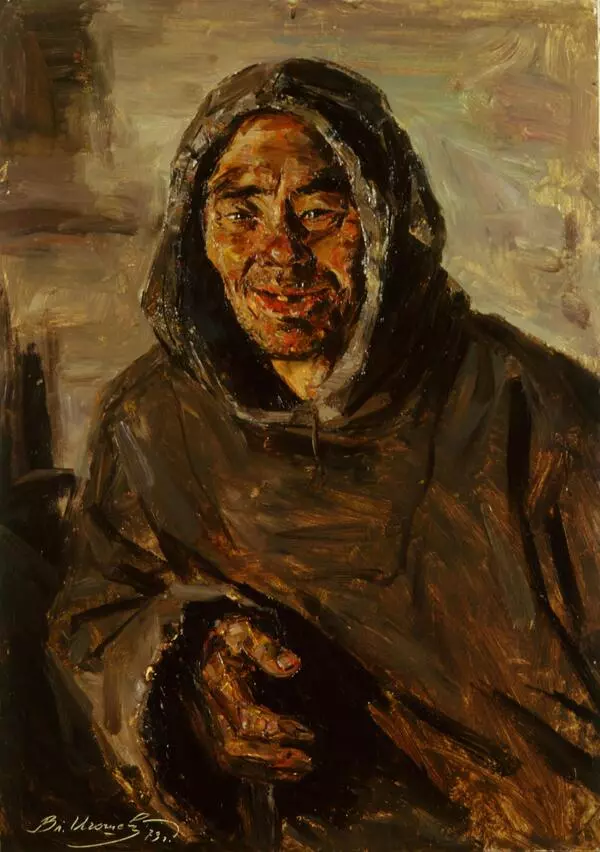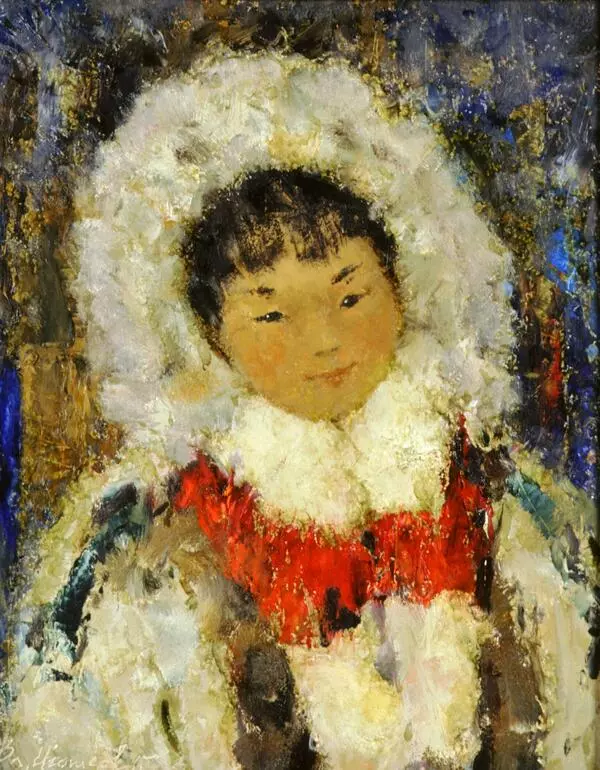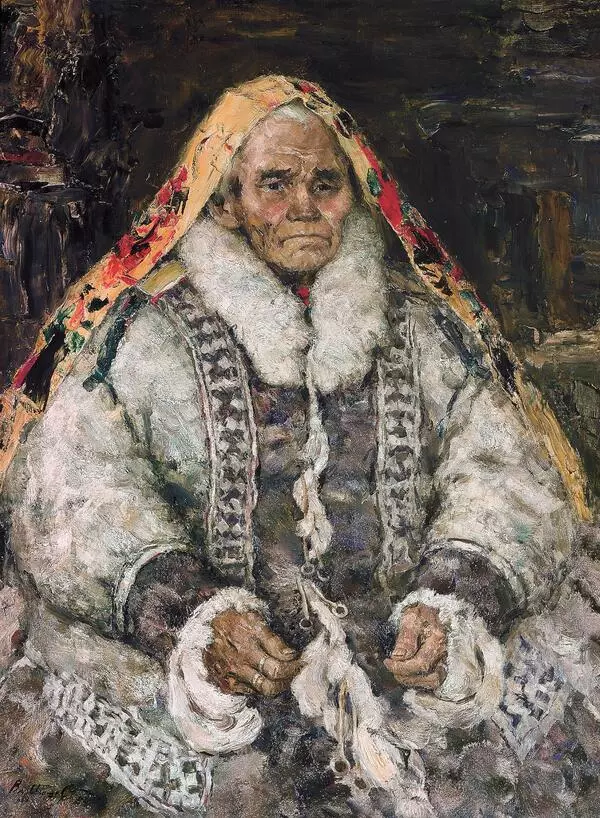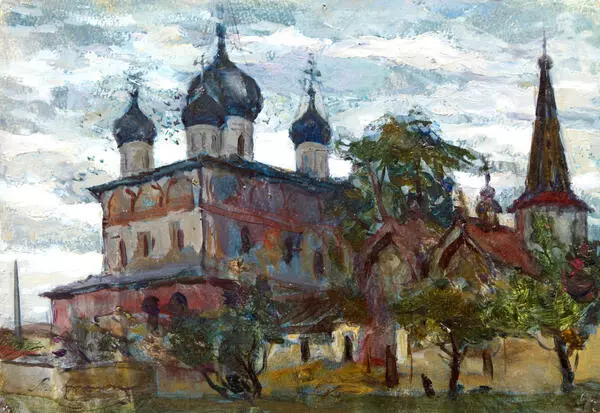The People’s Artist of the USSR Vladimir Igoshev was born in 1921 in Bashkiria. The future artist studied in Ufa at the Arts Faculty of the Ufa College of Arts. In 1950 Vladimir Igoshev graduated from The Surikov Art Institute in Moscow. Vladimir Igoshev worked in various genres: he painted portraits and self-portraits, worked on landscapes and genre paintings.
The portraits of elderly people painted by Vladimir Igoshev are very picturesque. Thanks to the composition each of Igoshev’s ‘old women’ embodies the keeper of national traditions.
The painting Taiga Patterns steps over the bounds of an ordinary portrait. In the foreground the painter depicted the still life composition with buckskin and furry bags decorated with national ornaments.
The old Mansi woman’s hands are occupied with handicraft; at the same time she looks absent-minded.
Among the Mansi people women were responsible for making clothing. In cold months they spent the long evenings sewing clothing for all family members. The women cut ornaments without any sketches or drafts and sewed them together. The craftswomen who worked with patterns used smooth and thick fur from the legs of reindeer. The pieces of different colour tones were put one upon another, sewed together and cut off in two stripes with the same pattern. The stripes were sewed together to make two reflecting patterns. The decorations were also made with the help of fur mosaic. The stitch was situated on the inner side, so the surface of the clothing looked like the unified whole. Such technique was generally used for making small carpets and paintings. The fur of white-legged reindeer was the most precious, as they were very rare.
Khanty and Mansi peoples have original chest-type jewelry. Its main material is seed bead. Usually it covered the foundation cloth, otherwise it was applied in the form of the openwork. The metal parts were used much less often, mostly they were coins, pendants, small bells, thimbles and buttons hung to the ends of the tassels. The clothing was also decorated with fringe.
The portraits of elderly people painted by Vladimir Igoshev are very picturesque. Thanks to the composition each of Igoshev’s ‘old women’ embodies the keeper of national traditions.
The painting Taiga Patterns steps over the bounds of an ordinary portrait. In the foreground the painter depicted the still life composition with buckskin and furry bags decorated with national ornaments.
The old Mansi woman’s hands are occupied with handicraft; at the same time she looks absent-minded.
Among the Mansi people women were responsible for making clothing. In cold months they spent the long evenings sewing clothing for all family members. The women cut ornaments without any sketches or drafts and sewed them together. The craftswomen who worked with patterns used smooth and thick fur from the legs of reindeer. The pieces of different colour tones were put one upon another, sewed together and cut off in two stripes with the same pattern. The stripes were sewed together to make two reflecting patterns. The decorations were also made with the help of fur mosaic. The stitch was situated on the inner side, so the surface of the clothing looked like the unified whole. Such technique was generally used for making small carpets and paintings. The fur of white-legged reindeer was the most precious, as they were very rare.
Khanty and Mansi peoples have original chest-type jewelry. Its main material is seed bead. Usually it covered the foundation cloth, otherwise it was applied in the form of the openwork. The metal parts were used much less often, mostly they were coins, pendants, small bells, thimbles and buttons hung to the ends of the tassels. The clothing was also decorated with fringe.

